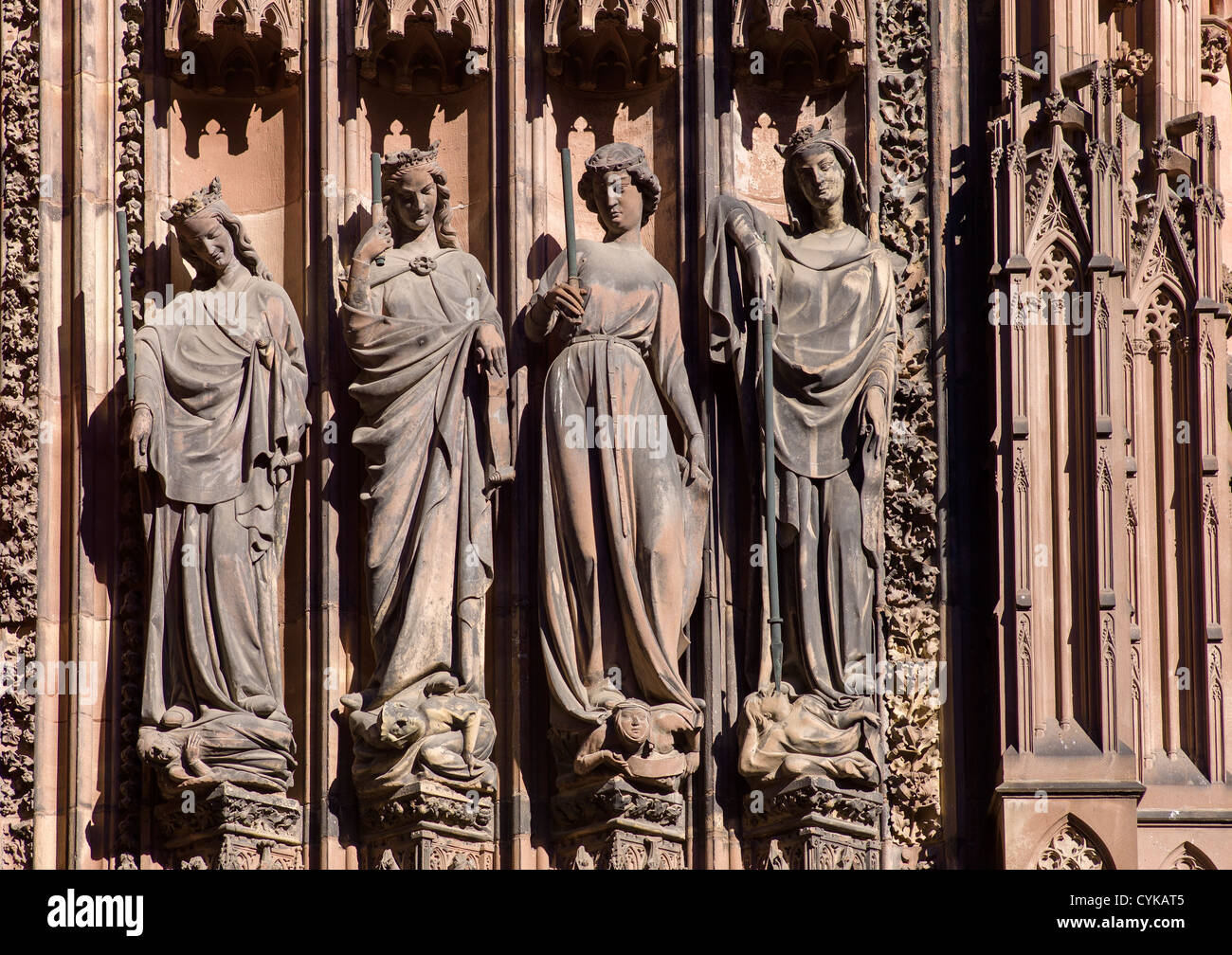
Another new decorative feature, blind arcade tracery, was attached to both interior walls and the facade.
#GOTHIC VIRTUES AND VICES LIST WINDOWS#
In addition to the large rose window on the west, smaller rose windows were added to the transepts and over the portals on the west facade, taking the place of the traditional tympanum. Instead of alternating columns and piers, the vaults were supported by rounded piers, each of which was surrounded by a cluster of four attached columns that received the weight of the vaults. it also used the more advanced four-part rib vault, which allowed greater height and more harmony in the nave and choir. Unlike the cathedrals of Early Gothic, Reims was built with just three levels instead of four, giving greater space for windows at the top. The choir was finished by 1241, but work on the facade did not begin until 1252, and was not finished until the 15th century, with the completion of the bell towers. A fire in 1210 destroyed much of the old cathedral, giving an opportunity to build a more ambitious structure, the work began in 1211, but was interrupted by a local rebellion in 1233, and not resumed until 1236. Reims Cathedral was the traditional site of the coronation of the Capetian dynasty and for that reason was given special grandeur and importance. Chartres still has much of its original medieval stained glass, famous for the deep color called Chartres blue. The spire on the north tower is later Flamboyant. The fronts of the north and south transepts are High Gothic, as is the sculpture of the six thirteenth-century portals. The lower portions of the west front (1134–1150) are Early Gothic. Since the cathedral was constructed with the new flying buttresses, the walls were more stable, enabling the builders to eliminate the tribune level, and have more space for windows. The new cathedral was 130.2 meters long and 30 meters high in the nave longer and higher than Notre-Dame de Paris. Only a few changes were made since that time, including the addition of a new chapel dedicated to Saint Piat in 1326, and the covering of the choir columns with stucco and the addition marble reliefs in behind the stalls in the 1750s. It was not formally reconsecrated until 1260. Work was nearly completed by 1225, with the architecture, glass and sculpture finished, though the seven steeples were still being rebuilt. Rebuilding began the same year, with support from the Pope, the King, and the wealthy nobility and merchants of the city. The cathedral immediately previous to the present church burned in 1194, leaving only the crypt, towers, and the recently built west front.
#GOTHIC VIRTUES AND VICES LIST SERIES#
A series of earlier cathedrals in Chartres beginning in the fourth century, were destroyed by fire. Chartres Cathedral (1194–1225) Ĭhartres Cathedral is in a prosperous trading town, the site of four annual trade fairs on the Feast Days of the Virgin Mary and a popular pilgrimage site which displayed the reputed tunic that Mary wore when giving birth to Christ. Windows at Charters Cathedral have panels that illustrate and honour the shoemakers, the fishmongers, water-carriers, the vine-growers, the tanners, the masons, and furriers. The guilds of craftsmen also contributed, and their contributions are often indicated by small panels showing workers in those professions.

A large part of the cost was donated by wealthy merchants and other members of community. The construction fund for Chartres Cathedral received contributions both from the French King and Richard the Lion-Hearted of England. Some funding for cathedrals came from the royal treasury, and from surprising foreign sources. The royal patronage of cathedrals and other Gothic architecture was continued Louis VIII of France and especially Louis IX of France, or Saint Louis who paid for the transept rose windows of Notre-Dame and built Sainte-Chapelle as his royal chapel. He paved the Paris streets and built the first wall around the city, continued the construction of Notre Dame de Paris, and constructed the fortress of the Louvre. He founded the University of Paris and was a great builder. In the process, he reduced the power of the French nobles and granted status to wealthy merchants and other bourgeoisie, who became important sponsors of cathedrals. He defeated a coalition of English, German, and Flemish forces at the Battle of Bouvines in 1214, making France the most powerful and prosperous state in Europe.

He gradually extended his power beyond the Ile-de-France to assume dominance over Normandy, Burgundy, and Brittany. The new style illustrated the ambitions of the French kings of the Capetian dynasty, and particularly Philip II of France, who reigned from 1180 until 1223.


 0 kommentar(er)
0 kommentar(er)
